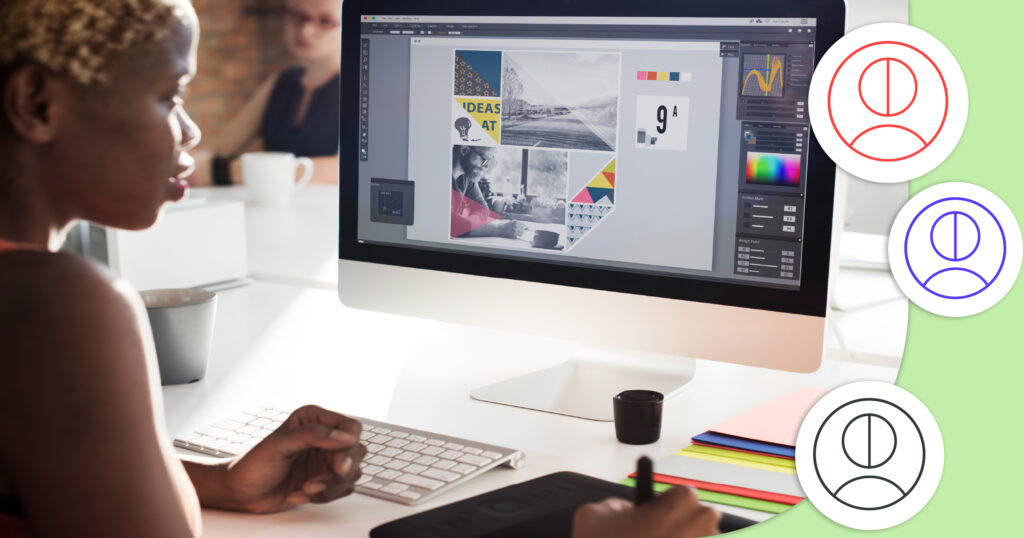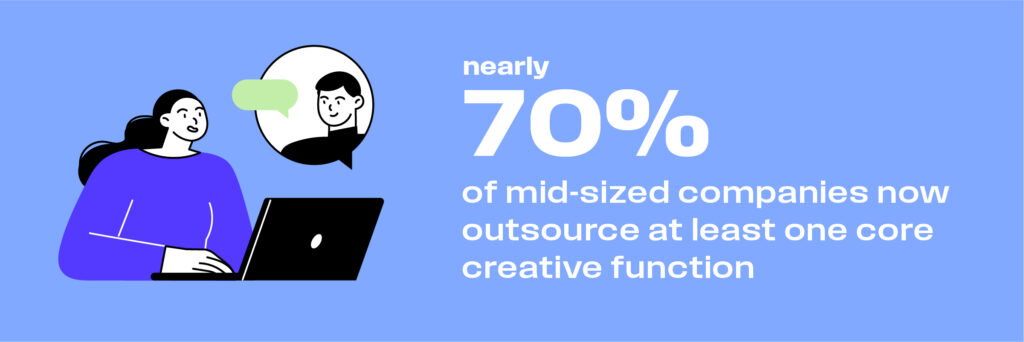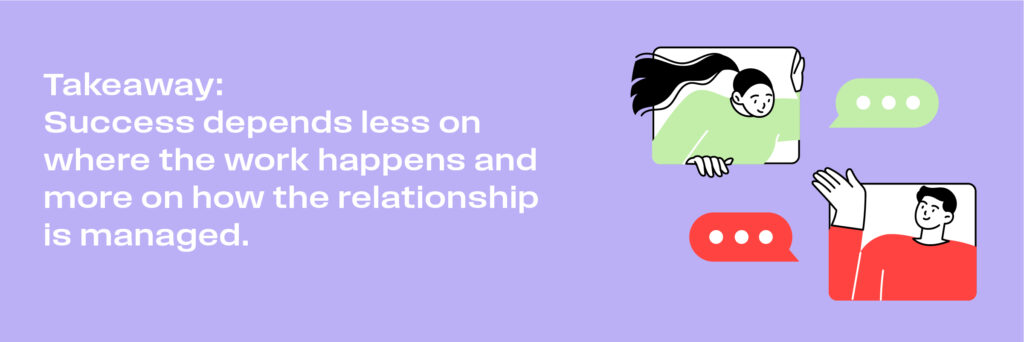
According to a 2024 Design Management Institute report, nearly 70% of mid-sized companies now outsource at least one core creative function. The reason? Agility, access to specialized talent, and the need for a fresh perspective. As companies race to launch new SaaS products, refresh websites, and evolve their brands, creative demands are outpacing the capacity of many internal teams. But is outsourcing the right move for your business? Let’s dig into why companies are increasingly turning to external design agencies, what the trade-offs are, and how to build a partnership that actually works.

Why Companies are Turning to an External Design Agency
If you’ve ever struggled to balance creative ambition with bandwidth, you’ll understand the appeal. External teams are built for speed. They can spin up a new brand identity, logo, website refresh, or campaign in weeks instead of months because they already have the structure, teams, and systems in place. Whether you need a UI audit, a product animation, or a design system overhaul, agencies offer niche expertise that would be costly or impractical to hire full-time.
A full in-house team comes with overhead like salaries, software, benefits, and training. With an agency, you pay for deliverables and expertise when you need them. Many companies find that retainers or project-based partnerships strike the right balance between control and cost.
Internal teams can get too close to the brand. Also, creatives often like variety in the work they do and can feel stagnant working on the same brand day in and day out. An external partner brings an outsider’s lens, leading to challenging assumptions, spotting inconsistencies, and unlocking new ideas. And, by delegating design execution to an external team, your internal marketing and product leaders can focus on what they do best: shaping the brand and driving results.
The Trade-Offs: What You Give Up When You Go External
Of course, outsourcing creative work isn’t without its challenges. The key is knowing what to expect and how to manage the trade-offs. No matter how talented your external design agency is, they’re typically not in every internal meeting or steeped in your product every day. That can make it harder for them to nail brand tone or subtle nuances without guidance. However, experienced agencies are used to this and have usually found ways to navigate these gaps that allow them to get as immersed in the brand as possible. This is one reason why establishing long-term agency partnerships can be exceptionally beneficial, as well as pulling your agency into as many internal meetings and conversations as possible.
In contrast, if you rely too heavily on one external agency, you could face disruption if the relationship ends or priorities shift. Many companies mitigate this by building light internal creative capacity while maintaining key external partnerships.
Creative chemistry matters when selecting the right agency for your business. An external agency that nails design but doesn’t understand your brand voice or customer mindset can lead to missed opportunities. Ensuring personalities between your team and the agency team mesh well will also make for better synergy and alignment across the relationship. Consider that different time zones, tools, or expectations can cause delays if not proactively managed, so schedule weekly syncs and share project management systems to help keep things on track.
But keep in mind that each of these risks can be manageable with the right setup.
Best Practices for a Seamless Partnership Setup
Working with an external design agency can feel either effortless or chaotic, depending on how you structure it. These best practices can help ensure the former:
1. Define Clear Goals and KPIs
Start with why. What’s the business problem you need the agency to solve? If possible, based on the type of project, define clear metrics for success: brand awareness lift, web conversions, campaign engagement, etc. Someone inside your team should own the agency relationship, including reviewing work, consolidating feedback, and ensuring brand alignment.
2. Utilize the Right Tools and Communication Channels
Give external teams access to your brand guidelines, tone-of-voice docs, and design libraries. The more context they have, the better the results. If you don’t have these things, that might be a great project to have the agency work on. A detailed brief can save countless hours of revisions. Agencies typically will ask you to complete their brief template, and if they don’t, you can provide your own (or maybe ask why they don’t use one!). Invite them into Slack, Figma, Notion, or your preferred platforms for better collaboration.
3. Start Small, Then Scale
Test the relationship with a pilot project. Evaluate results, communication, and fit before committing to a larger retainer. The best work comes from trust. You want to get to the point that you can treat your agency as an extension of your team, not just a vendor delivering assets. Remember, they’re on your side!

The decision to outsource should be intentional. Know your goals, define your processes, and choose partners who understand your brand as deeply as you do.
If your creative workload is growing faster than your team, it might be time to explore an external design partnership. Start small, test the fit, and build the systems to make collaboration seamless. We’d love to discuss how we can help you!